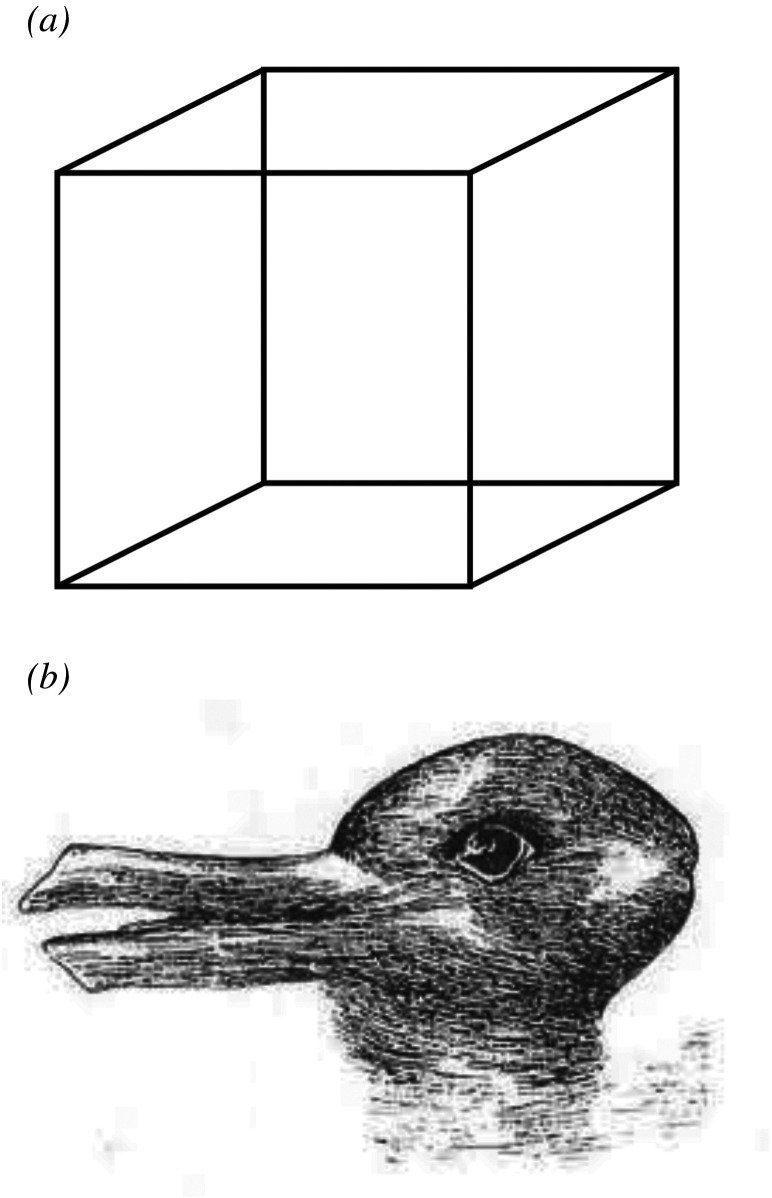Figure 2.
Bistability in perceptual systems. Bistability (or more generally, multistability) during perception refers to (apparently random) spontaneous subjective fluctuations between competing interpretations of ambiguous perceptual (e.g. visual) stimuli. Some examples are (a) the Necker cube illusion, which can be interpreted to have either the lower-left or the upper-right square as its front side; and (b) the duck–rabbit illusion, which can be interpreted either as a duck or as a rabbit. Note that the two competing hypotheses are never considered (or perceived) simultaneously.

